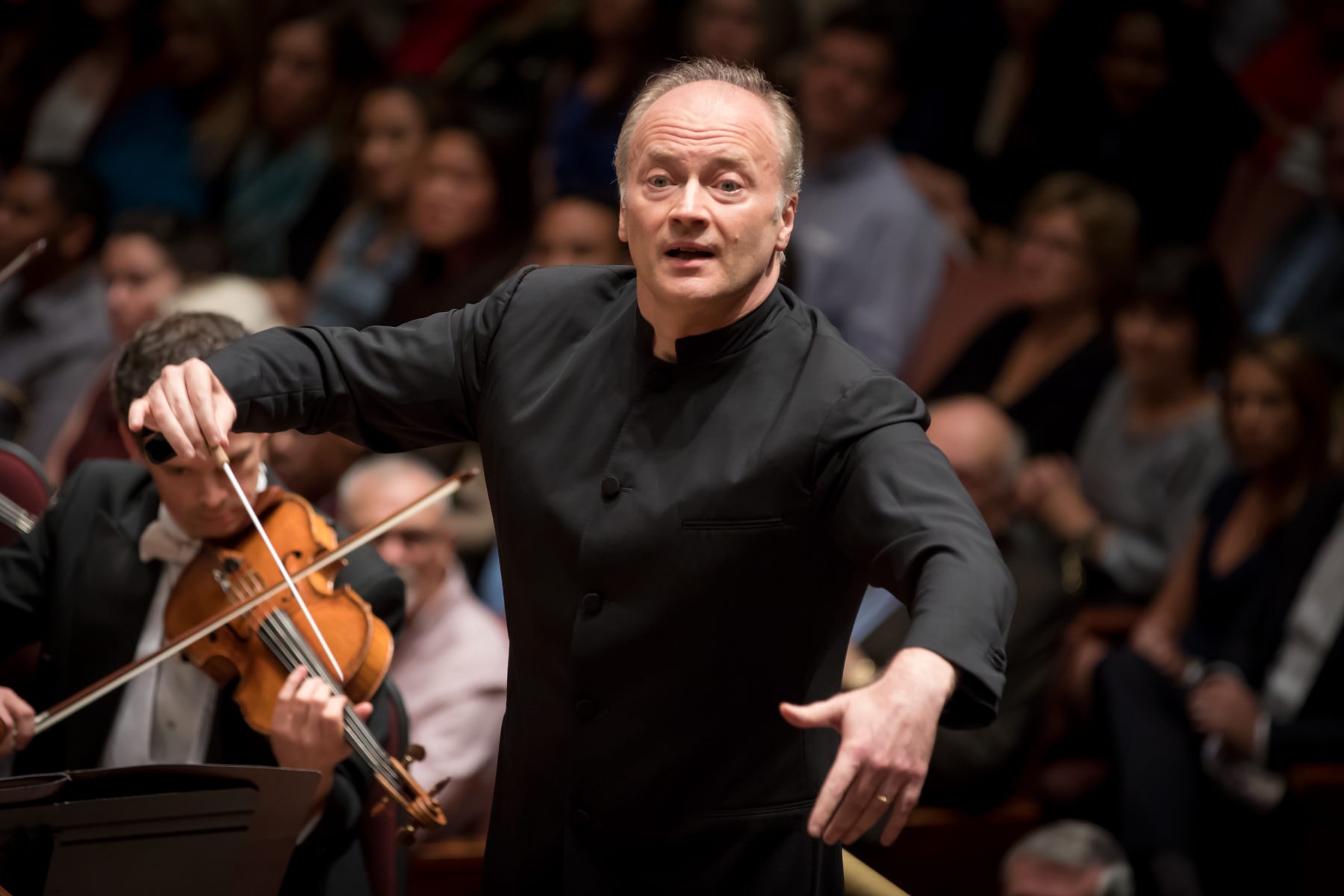Now that National Symphony Orchestra music director Gianandrea Noseda has nearly completed two full seasons – and has signed on to stay through 2025 – a clearer picture of the possibilities we can expect from our hometown band under his baton has emerged.

While I cherish the artisanship of Noseda’s predecessor, Christoph Eschenbach – especially his soul-meld way with Strauss and Mahler – I have always sensed that Eschenbach’s internal world was more real to him than the one around him. Perhaps this left the NSO players at a loss, dulling their sound. Contrast Eschenbach’s taciturn manner with Noseda’s extroversion, slightly awkward English, and ready smile, and it seems the NSO musicians have found their spirit animal, brightened by his joie de vivre.
On the opening night of their current programming, a high-spirited NSO played Aaron Copland’s Billy the Kid Suite, followed by Manuel de Falla’s Seven Popular Songs arranged for orchestra by Luciano Berio, and Antonin Dvořák’s Ninth Symphony in E minor, From the New World (aka, The New World Symphony). Following the de Falla was an encore performance of Augustin Lara’s Grenada. All four works offered a faceted glimpse of how the musicians are responding to Noseda’s upbeat personality and lively style.
The cheerful maestro began the performance with a brief introduction explaining how indigenous strains tied the works together, and gave a generous nod to the musicians by acknowledging that as the Americans on the stage – Noseda is Milanese – they were the experts in the Copland piece, but that he had, of course, learned it, too. This set the tone for an easy give and take between the maestro and his musicians as they rendered the boisterous work meant to depict open prairies, shoot outs, and a plucky young man gone bad. Billy the Kid might have been an outlaw, but he still had an “aura around him”, the conductor told the audience, explaining that he hears “compassion” for The Kid in Copland’s score. The brass section rendered just the right lonesome pitch to underscore this.
American mezzo-soprano Isabel Leonard replaced Georgian mezzo-soprano Anita Rachvelishvili who pulled out for personal reasons, according to NSO press materials, on the program. Rachvelishvili had been set to sing Berio’s Folk Songs, which, with her dramatic sound, would have been better suited to the night’s boisterous line-up than Leonard’s more refined treatment of the de Falla songs.

As a performer, Leonard is elegant and precise – perhaps more than necessary, and so lacked the fire the zestier songs in the cycle would have benefitted from having. Given how lovely her versions were of the more pensive songs such as “Asturiana”, however, she evidenced her talent for recital and oratorio singing. And while I hesitate to write this, I have wrestled my angel down: I sense she is struggling with how to use her beautiful instrument. Is she on the verge of deciding she is actually a soprano with an extended range? If so, perhaps she will reconnoiter and find the oomph she needs to slice through the orchestra, which she could not do for this performance.
Granada was supposed to have showcased Leonard’s vocal flourish but instead, the moment belonged to the orchestra. They got straight to it, bouncing along with the maestro even as the confused patrons who’d not counted on hearing the bonus work milled about in the aisles. Eventually, the audience members returned to their seats only to pop out again cheering when the swirling sounds of the perennial favorite came to an end.
The highlight of the night, however, was the Dvořák. Although the work is rightly celebrated for its Negro spiritual-inspired theme carried by the woodwinds in the largo movement, the NSO string section shined brightest in this work, masterfully shaping the entire piece into such a gem, I hope the maestro considers recording the work with the NSO one day. I suspect it would be among the better recordings of the piece currently available. Noseda’s tempi highlighted the inherent nuances of the score, making it an emotional experience to hear.

It will be interesting to compare this performance to how the band responds to Eschenbach’s baton when he returns next January to conduct the NSO along with violinist Christian Tetzlaff in Dvořák’s Violin Concerto.
The evening’s performance also included a farewell to two retiring NSO members, violinist Linda Schroeder and cellist Janet Frank. It was a reminder that as more orchestra seats become available over the next six years, it will be Noseda who hires the musicians to fill them. If the current players accept his choices and continue to resonate with the maestro’s innate vibrancy, the NSO might very well shimmer more each season.
Running Time: 90 minutes including one 15-minute intermission.
National Symphony Orchestra: The “New World” Symphony plays June 6-9, 2019, at the Kennedy Center – 2700 F Street, NW, in Washington, DC. For tickets, call (202) 467-4600 or go online.




